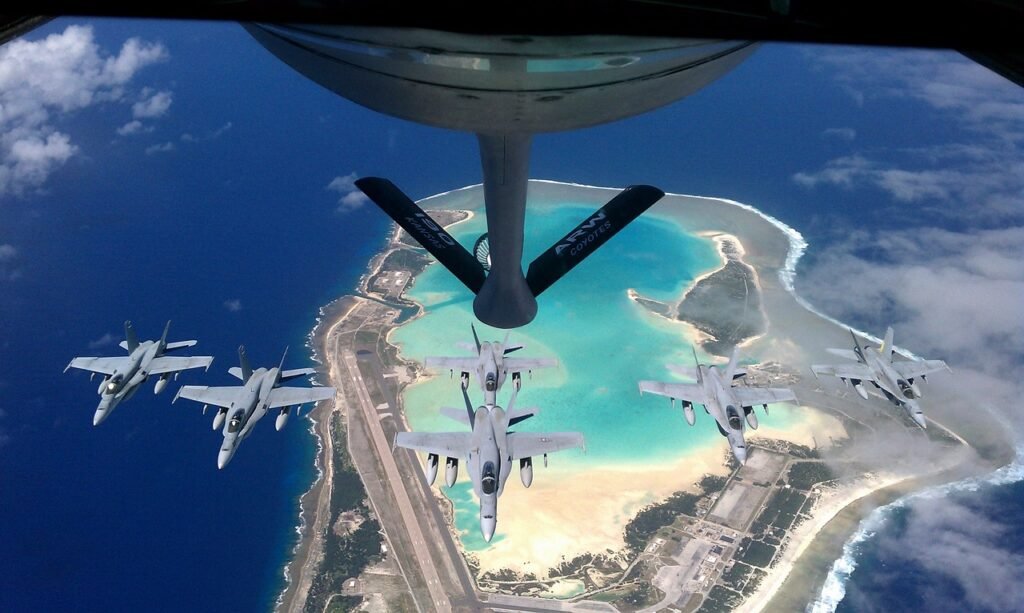There are several alternative power sources for jets that are currently being researched and developed, including:
Electric power: electric planes are already in development, and there is ongoing research into the use of electric power for larger aircraft. While electric power alone may not be sufficient for long-haul flights, it could be used in combination with other power sources to reduce emissions.
Hydrogen fuel cells: Hydrogen fuel cells, which combine hydrogen and oxygen to produce electricity, have the potential to provide a clean and efficient power source for aviation. Several companies are currently working on developing hydrogen-powered planes, and there have been successful test flights of these aircraft.
Biofuels: Biofuels made from renewable feedstocks, such as used cooking oil, agricultural waste, or algae, can significantly reduce the carbon emissions associated with air travel. There is ongoing research into the development of new biofuels, including those made from non-food crops or municipal solid waste.
Synthetic fuels: Synthetic fuels, also known as e-fuels or power-to-liquids, are made by combining renewable energy sources, such as wind or solar power, with carbon dioxide from the air or from industrial processes. These fuels have the potential to provide a zero-emissions alternative to traditional jet fuel.
Hybrid-electric systems: Hybrid-electric systems, which combine electric power with traditional jet engines, could be used to reduce emissions and increase efficiency. These systems are already being used in some small planes and drones, and there is ongoing research into their use for larger aircraft.
Overall, while these alternative power sources for jets are still in the development stage, they represent promising directions for the future of sustainable aviation.
Currently, the most commonly used hybrid fuel for jets is a blend of conventional jet fuel and sustainable aviation fuel (SAF). Sustainable aviation fuel is made from renewable feedstocks, such as used cooking oil, agricultural waste, or algae, and it can significantly reduce the carbon emissions associated with air travel.
The percentage of SAF in the blend can vary depending on the airline and the specific flight, but typically ranges from 10% to 50%. Some airlines, such as KLM and Lufthansa, have set ambitious targets to increase their use of SAF in the coming years, with the aim of reducing their carbon emissions and promoting sustainable aviation.
In addition to SAF, some airlines have also experimented with other alternative fuels, such as biofuels made from non-food crops, such as camelina or jatropha, or from municipal solid waste. However, these fuels are still in the early stages of development and are not yet widely used in commercial aviation.
Overall, the use of hybrid fuels, particularly sustainable aviation fuel, is an important step towards reducing the carbon footprint of air travel, and we can expect to see continued efforts to develop and adopt these fuels in the aviation industry.
Yes, there are currently several companies and research institutions working on the development of hydrogen-powered planes. Hydrogen fuel cells have the potential to provide a clean and efficient power source for aviation, with the only byproduct being water vapor.
Hydrogen planes would work by using a fuel cell system that combines hydrogen and oxygen to produce electricity, which would power the plane’s motors. The only emission from this process would be water vapor, which is a significant advantage over traditional jet engines that emit greenhouse gases and other pollutants.
Several companies, including Airbus and ZeroAvia, have already conducted test flights with hydrogen-powered planes. However, like electric planes, hydrogen planes still face several challenges to overcome before they can be widely used in commercial aviation. These include developing lightweight and efficient fuel cells, creating the necessary infrastructure for hydrogen production and distribution, and addressing safety concerns related to storing and handling hydrogen.
Despite these challenges, the development of hydrogen-powered planes represents a promising direction for sustainable aviation, and we can expect to see continued progress in this area in the coming years.
Electric planes are already in development and some have even completed test flights. However, the current technology and infrastructure for electric planes are not yet advanced enough for commercial use, particularly for long-haul flights.
They have several challenges to overcome, including the need for improved battery technology to achieve the required range and power density, as well as the development of efficient charging and power management systems, additionally, the weight of the batteries can be a limiting factor for commercial aircraft, as it reduces the payload and range.
Despite these challenges, there is significant progress being made in the development of electric plane, many companies and researchers are actively working on improving the technology, and it is likely that we will see more electric planes in the coming years, particularly for short-haul and regional flights. However, it may still be a while before we see electric planes for long-haul flights.

